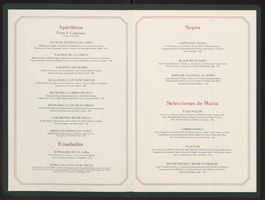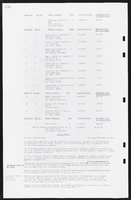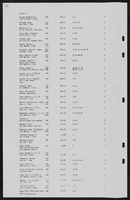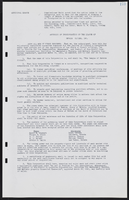Search the Special Collections and Archives Portal
Search Results
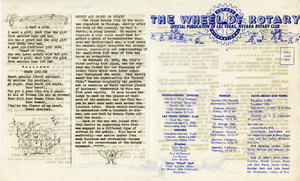
The Wheel of Rotary Las Vegas Rotary Club newsletter, October 13, 1949
Date
Archival Collection
Description
Text

Transcript of interview with Emma Richard Foremaster by Jamie McKee, March 20, 1978
Date
Archival Collection
Description
On March 20, 1978, Jamie McKee interviewed Emma Richard Foremaster (born 1899 in Alamo, Nevada) about her family history. Foremaster mainly discussed her ancestry, including the background of her parents and grandparents, and she did so in a pre-scripted narration-style account. Foremaster also talks about the various locations at which her family has lived, some of the recreational activities and occupations of her family, and some of the background of her own life. At the conclusion of the narration, Foremaster talks briefly about her children, her work in becoming a schoolteacher, and her appreciation for the advancements in technology as well as the love for her family and country.
Text
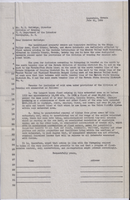
Letter from Las Vegas Chamber of Commerce to R. H. Rutledge (Washington, D.C.), with petition by Moapa Valley residents, June 1939
Date
Archival Collection
Description
Letter dated June 27, 1939, from the Las Vegas Chamber of Commerce supporting a petition date June 21, 1939, by property owners and taxpayers living in the Moapa Valley area of Clark County, Nevada. The petition requested that the area be placed under the control of the Division of Grazing. Such a designation would restrict the removal of timber from watershed areas and help prevent the effects of erosion due to flooding. According to the Bureau of Land Management, Grazing District No. 5 is Las Vegas, established November 3, 1936.
Text
Frehner, Vivian, 1914-1999
Born in St. Thomas, Nevada on May 6, 1914, Vivian “Viv” Frehner was a lifelong resident of southern Nevada. He worked on the construction of the Hoover Dam before becoming deputy sheriff in Caliente, Nevada in the 1950s. Frehner also worked as a rancher and heavy equipment operator. Viv Frehner died on July 18, 1999.
Source:
Bass, Debra D. “Nevadan Who Loved Horses and Rodeo ‘Viv’ Frehner Dies at Age 85.” Las Vegas Review-Journal, July 21, 1999.
Person


